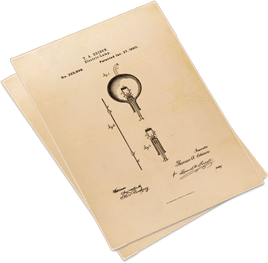Patentable Discoveries and Their Protection
Everyone understands what “invention” is. It’s making up something new. There are certain requirements that must be fulfilled, however, if a government is to grant you patent protection of your invention. These requirements are set out in law because, unlike the automatic copyright protection of creative expression and the protection that one owns as a simple consequence of use of a trademark, government does not have to grant you a patent.
A short explanation follows of what a patentable invention is:
- Patentable Inventions – Patents are granted for inventions of any new and useful process, method, machine, manufacture, or composition of matter, or any new and useful improvement thereof, with a few exceptions carved out by law.
- Novelty – The first requirement of a patentable invention is that it be novel, a newly discovered or devised thing not previously seen on this Earth. It need not be a whole thing, but can be a new part of an old thing. It need not be a material thing, either, but can be a process for doing, making or deriving something new, or a novel method of accomplishing something productive.
- Utility – The second requirement of a patentable invention is that it be useful. Pretty things, interesting things, puzzling things, no matter how novel in concept, are not patentable, unless they are also useful. Mundane but useful things, no matter how uninspiring, may be patentable.
- Non-Obviousness – The third requirement of a patentable invention is that it be non-obvious, that is, the invention must involve an inventive step or leap that is not obvious to a person of ordinary skill in the field of the invention, in view of what is known in the field of the invention.
- Reduction to Practice – A patentable invention is not merely a revelation of something which exists, but was previously unknown, nor is it merely an idea about something new, but rather is a development of something which did not exist before. The invention itself does not have to be presented in a tangible form – that is, it is not necessary to build a prototype of it. It must, however, be developed to the extent that it is deemed to be “reduced to practice,” a term of art that means that an invention must be able to be made, used, or carried out by one familiar with the field of the invention. A detailed description of the invention, one that enables a person skilled in the field of the invention to practice it without undue study or experimentation, suffices.


